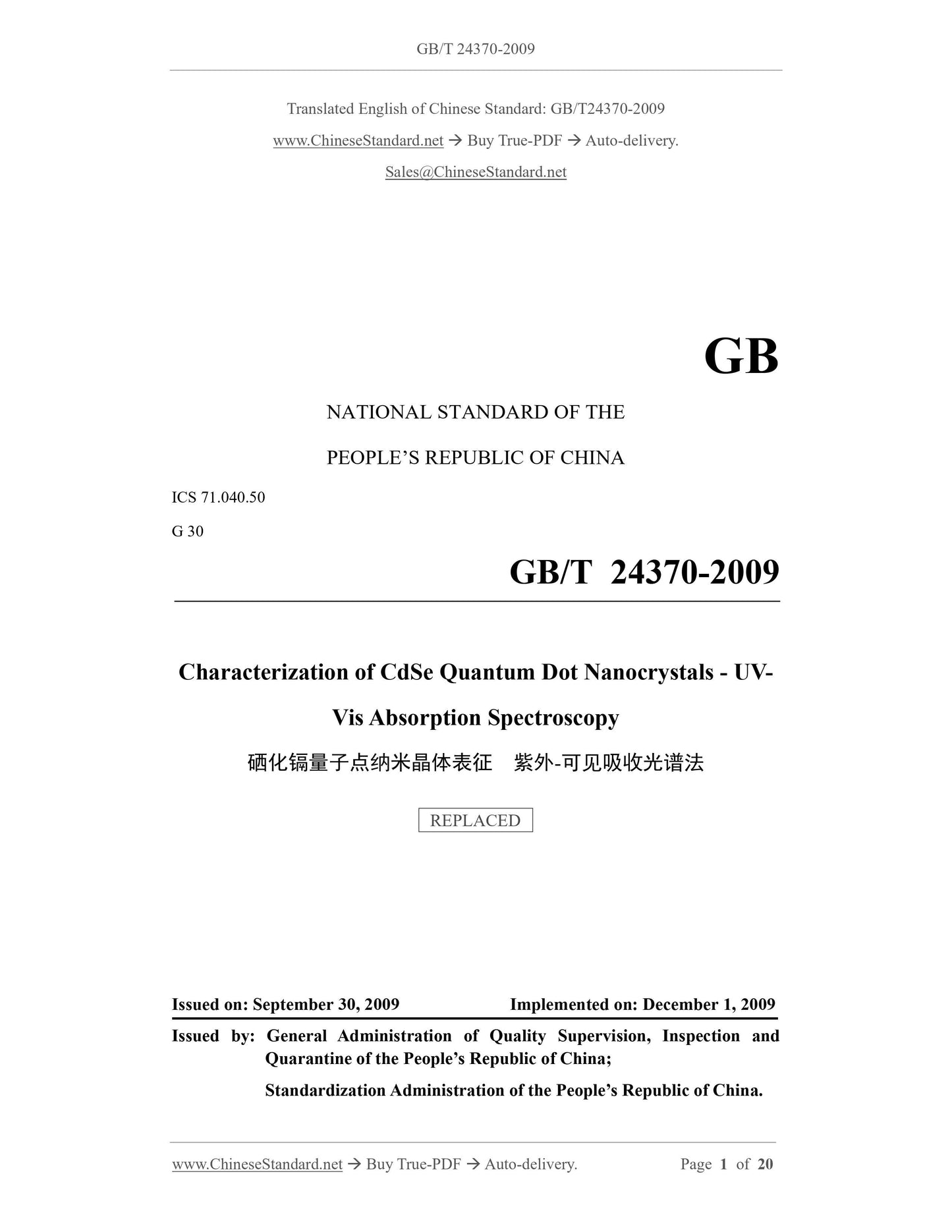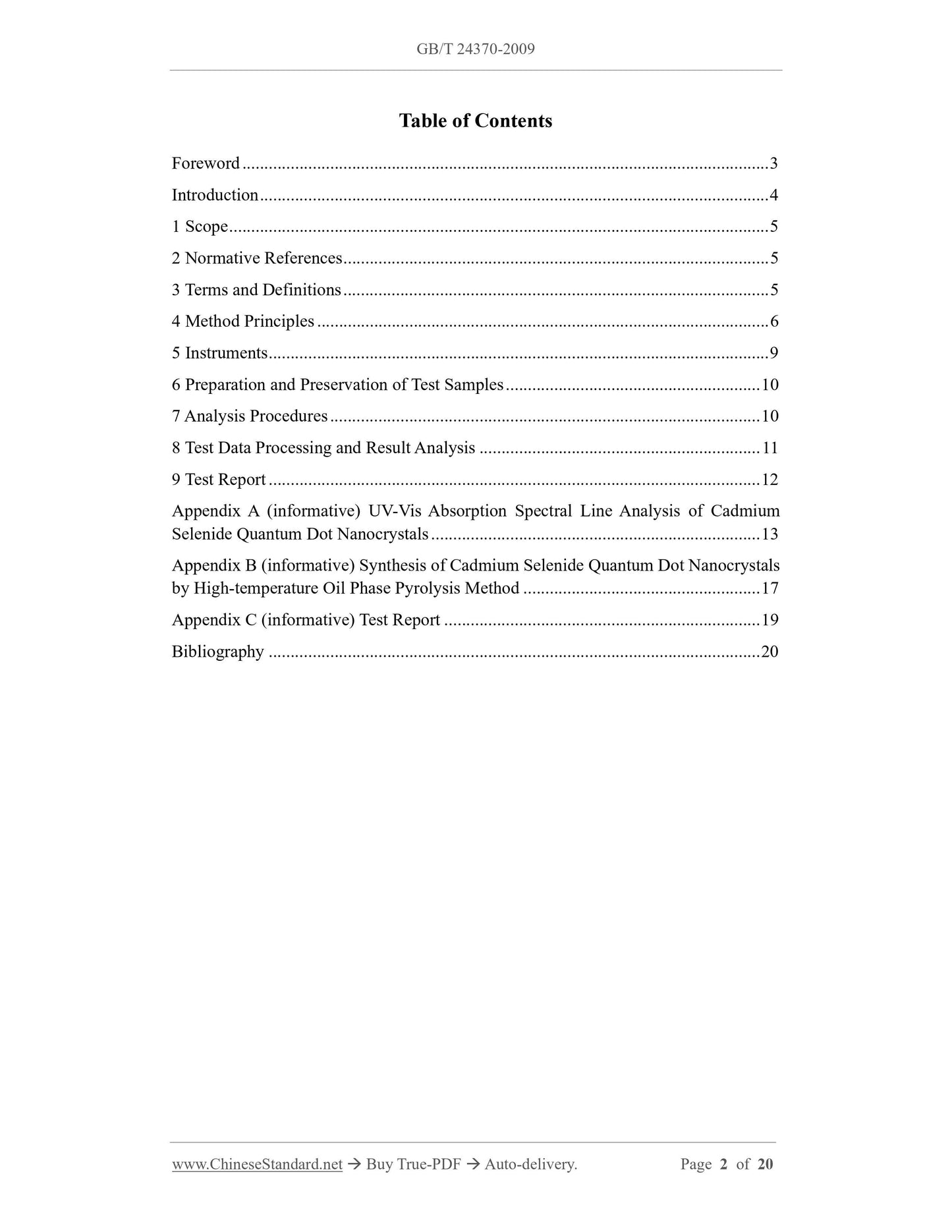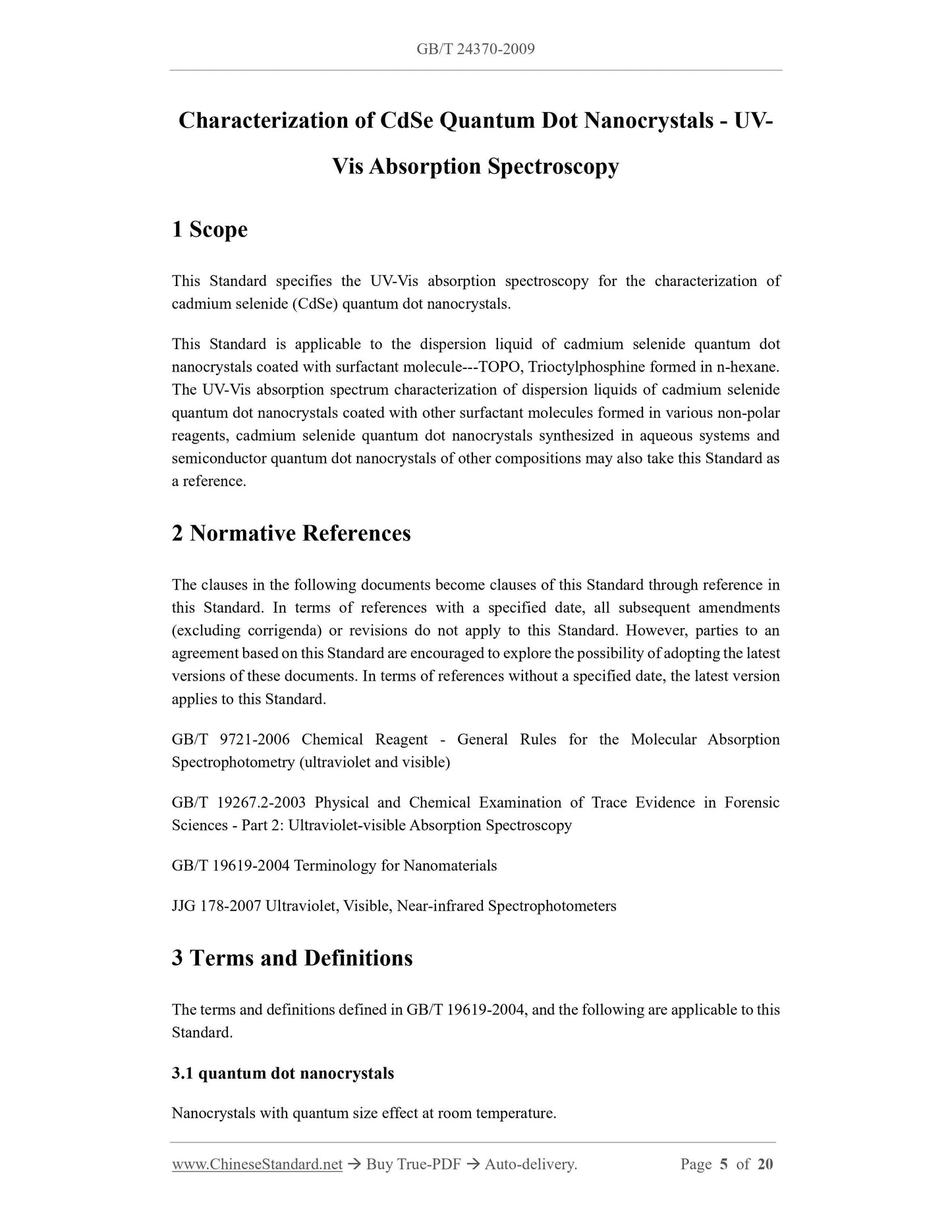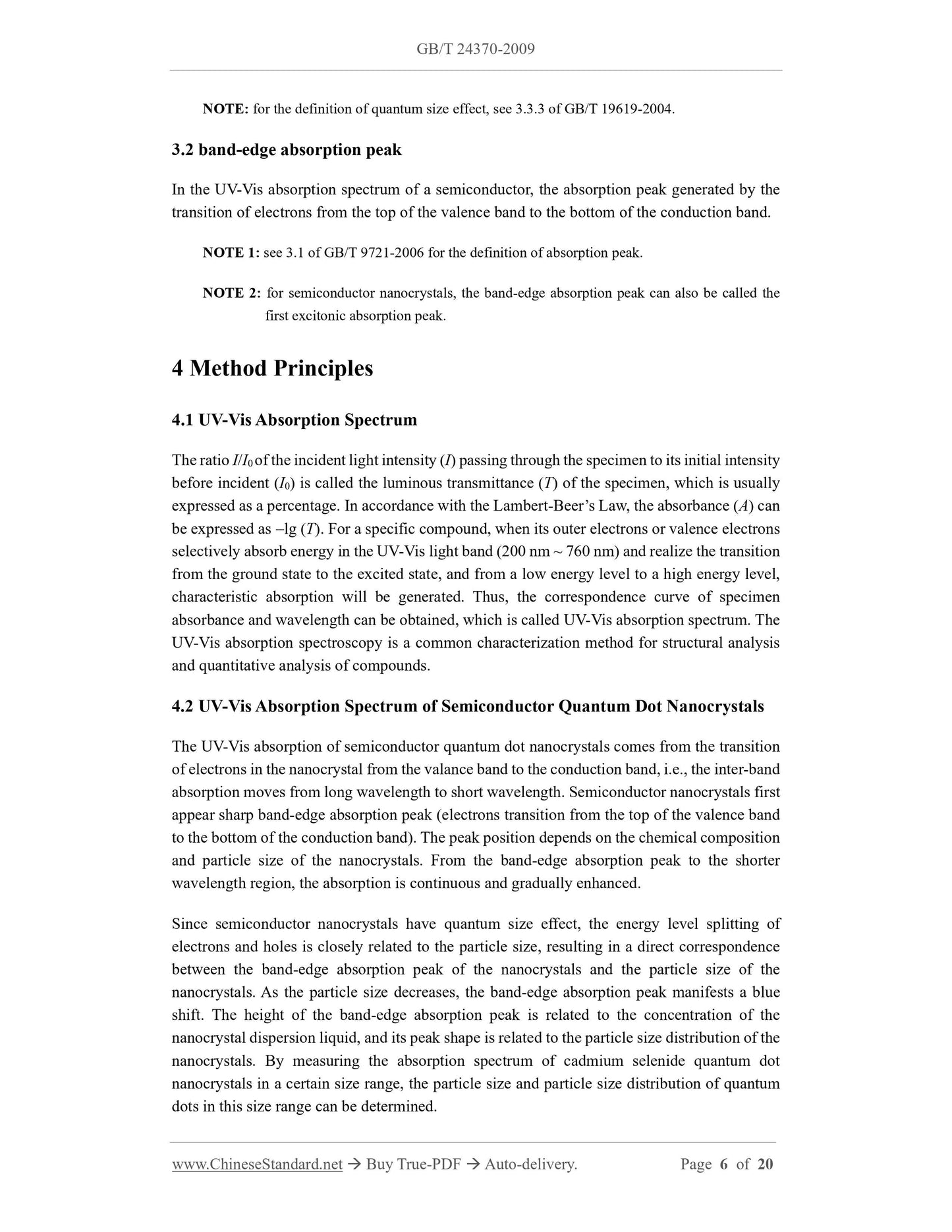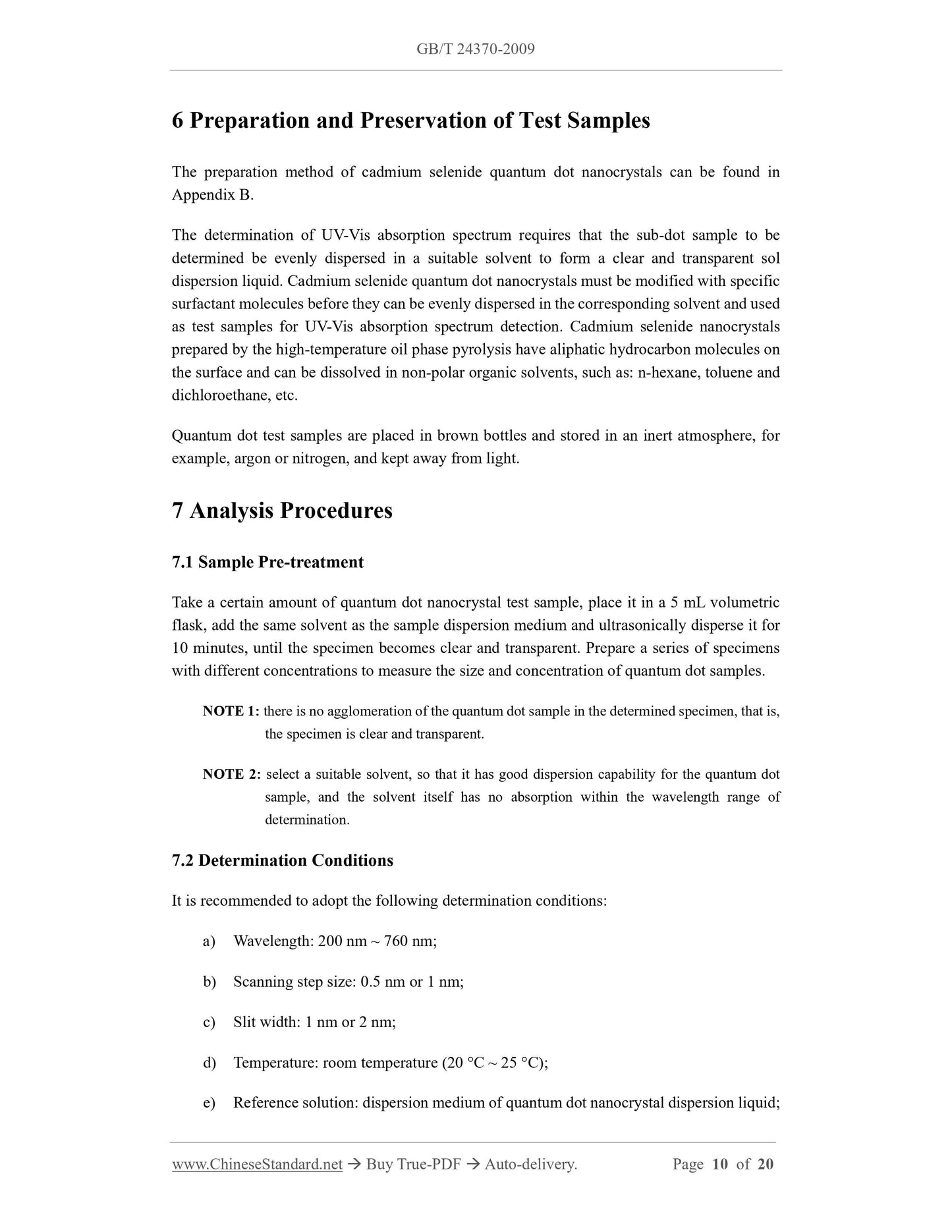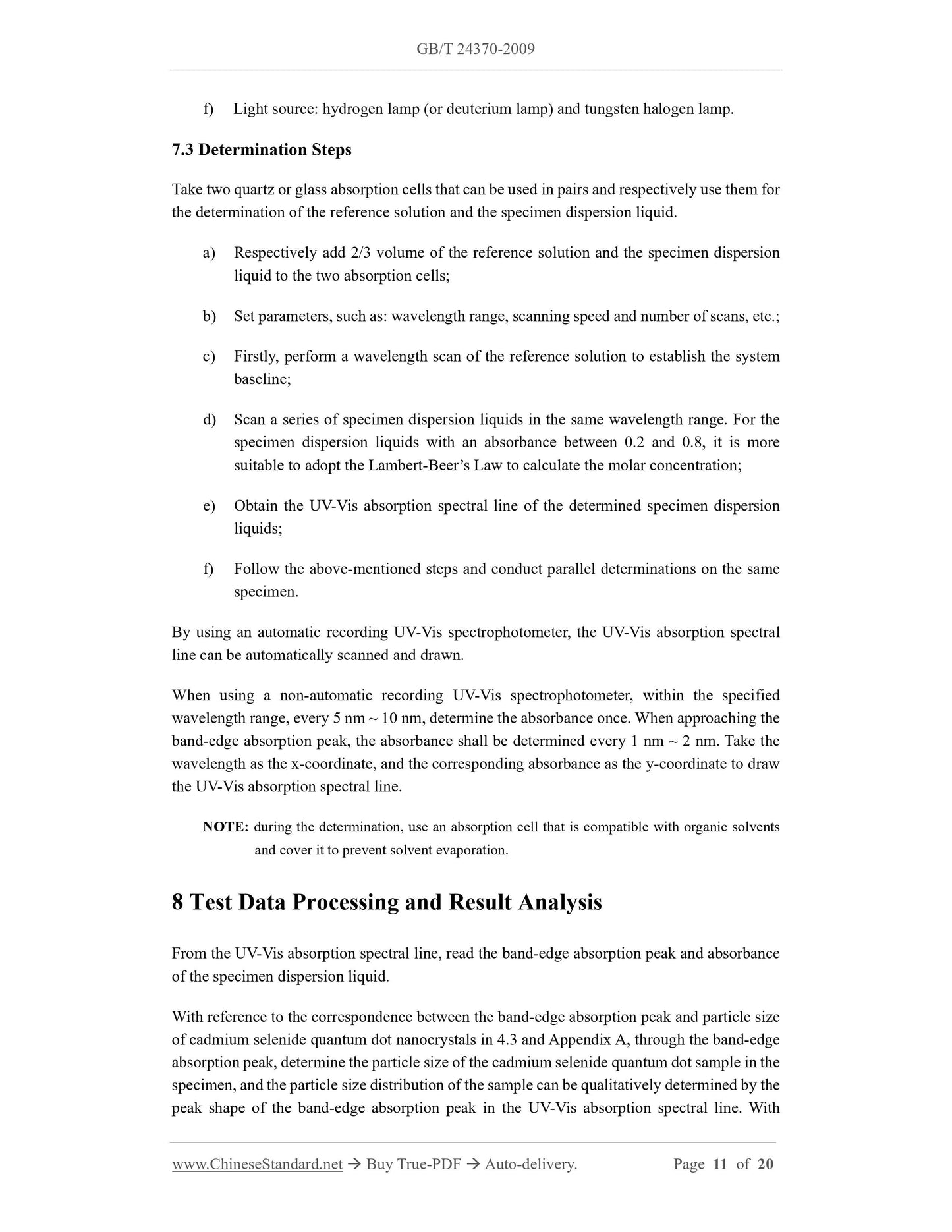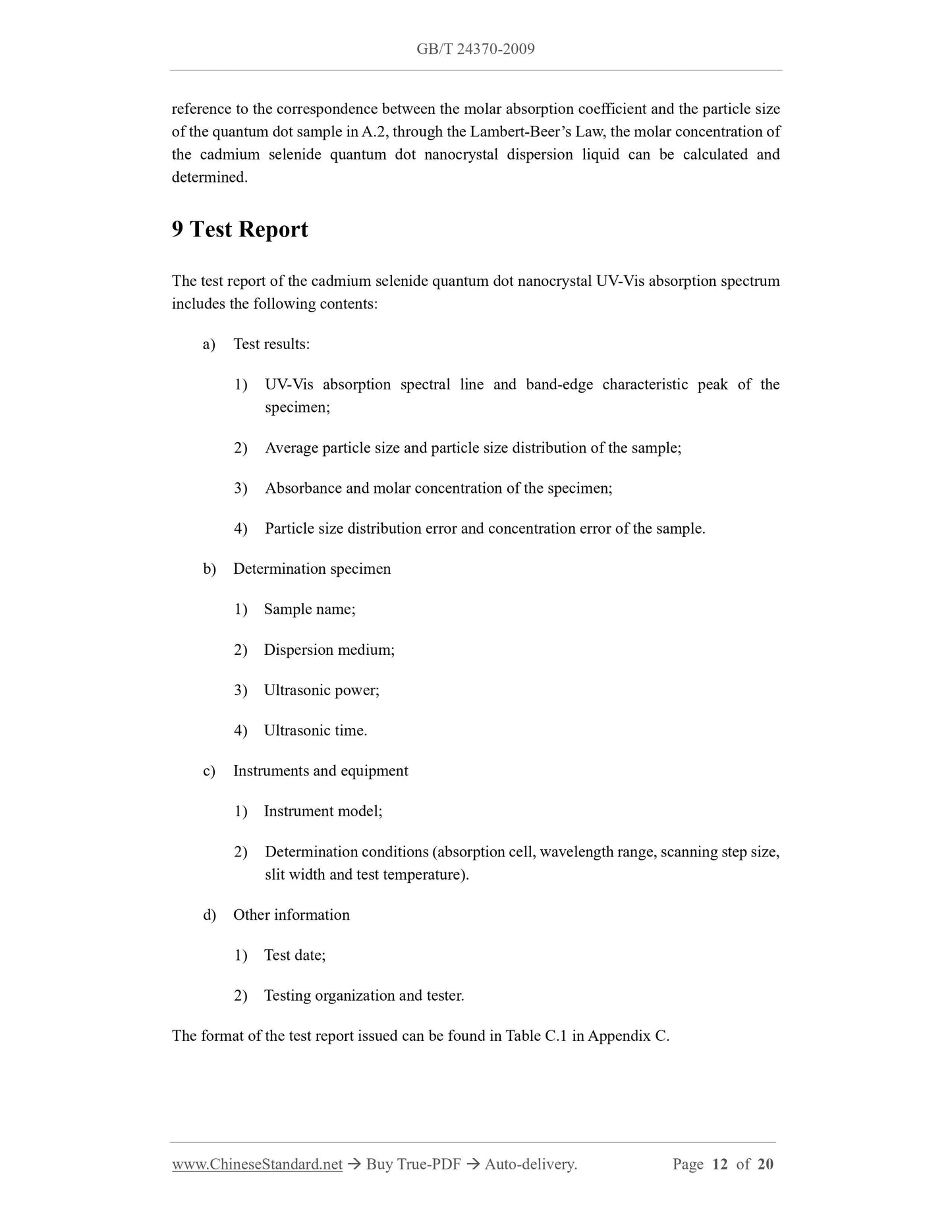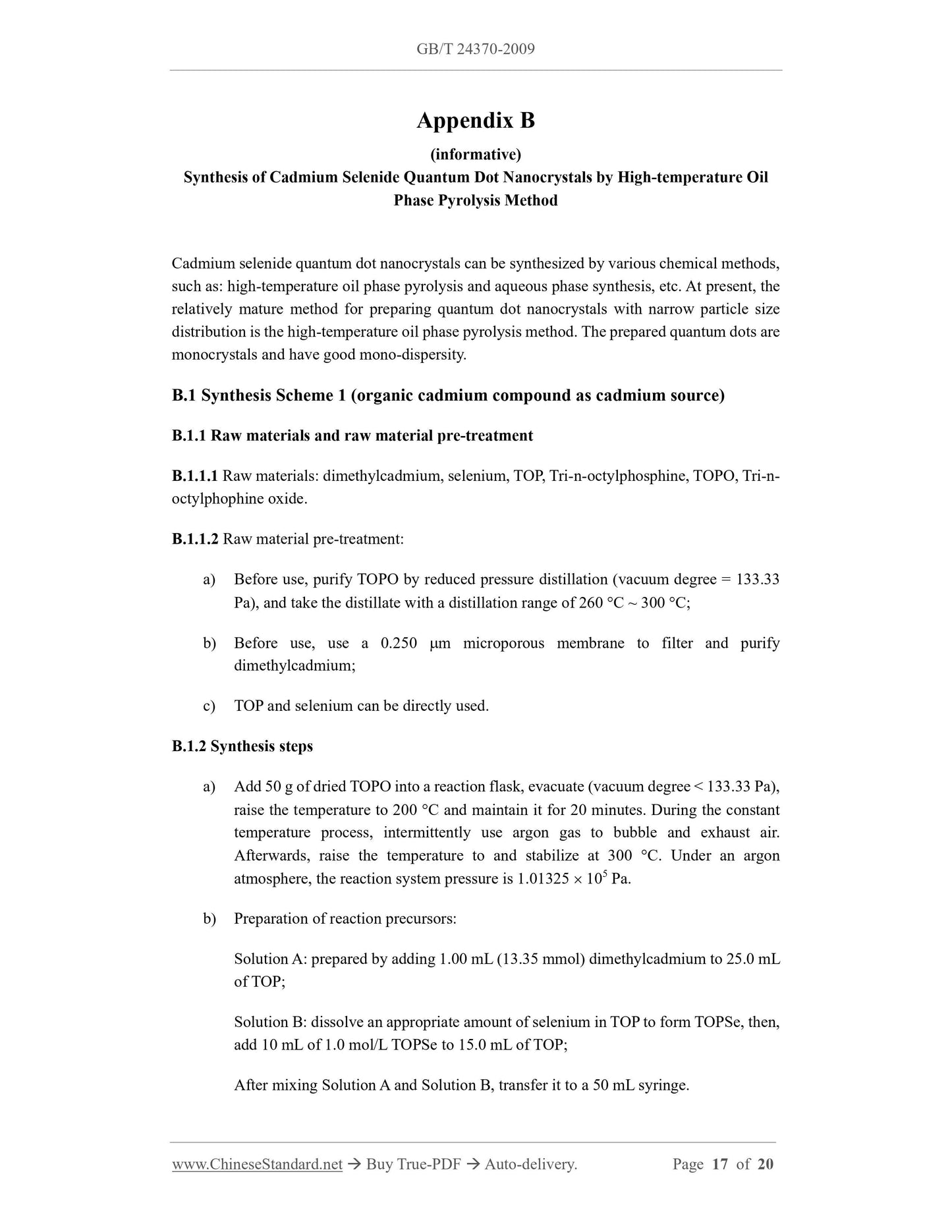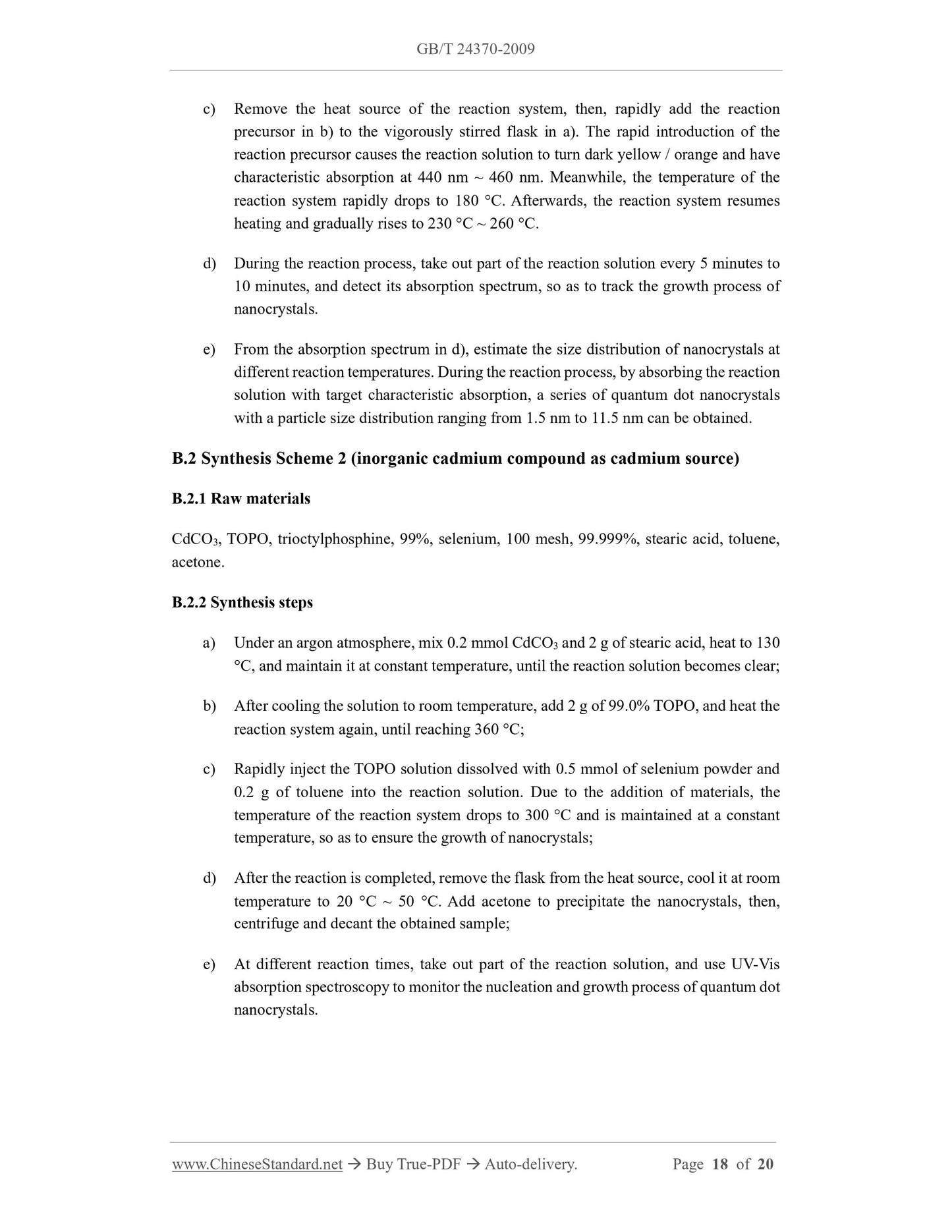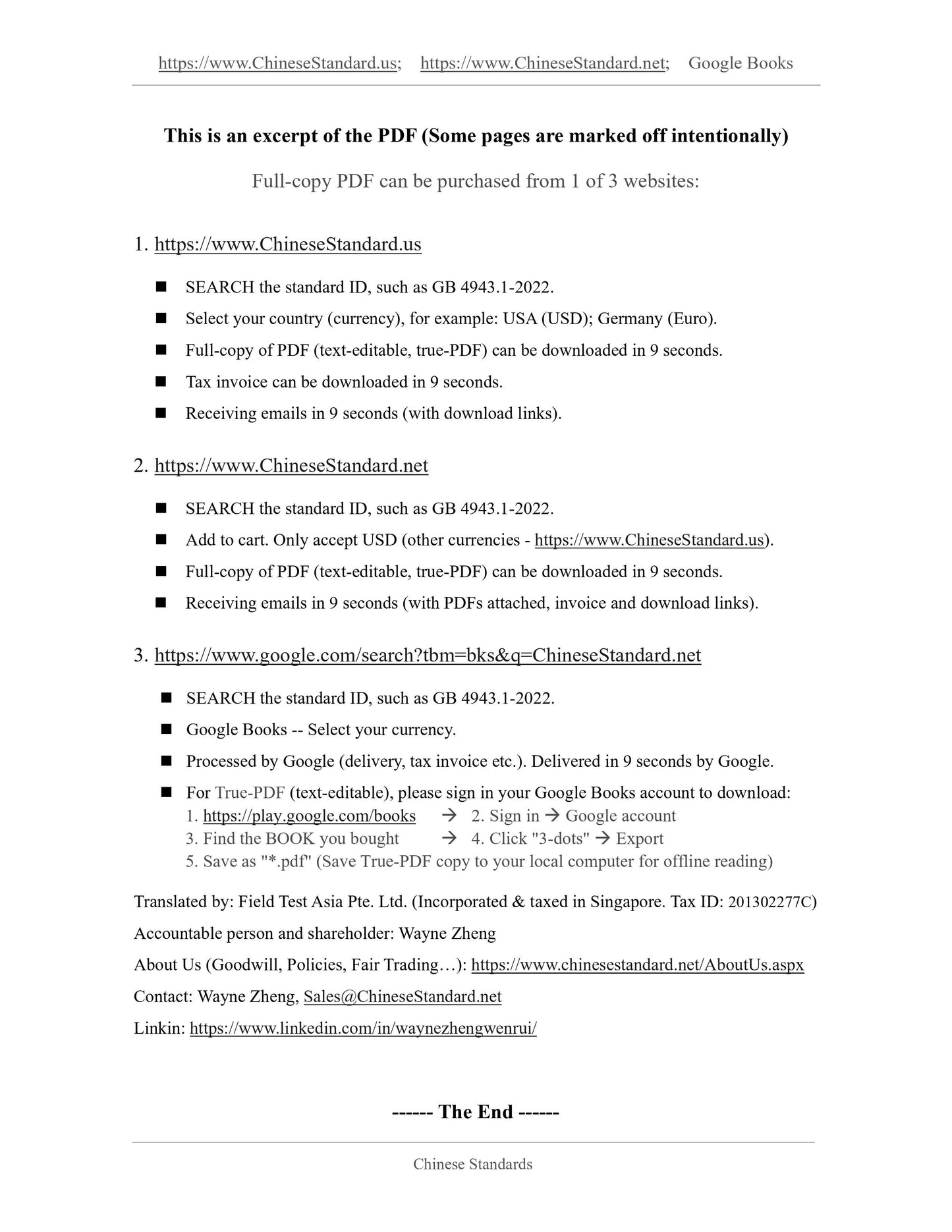1
/
of
10
PayPal, credit cards. Download editable-PDF and invoice in 1 second!
GB/T 24370-2009 English PDF (GB/T24370-2009)
GB/T 24370-2009 English PDF (GB/T24370-2009)
Regular price
$540.00
Regular price
Sale price
$540.00
Unit price
/
per
Shipping calculated at checkout.
Couldn't load pickup availability
GB/T 24370-2009: Characterization of CdSe quantum dot nanocrystals-UV-Vis absorption spectroscopy
Delivery: 9 seconds. Download (and Email) true-PDF + Invoice.Get Quotation: Click GB/T 24370-2009 (Self-service in 1-minute)
Newer / historical versions: GB/T 24370-2009
Preview True-PDF
Scope
This Standard specifies the UV-Vis absorption spectroscopy for the characterization ofcadmium selenide (CdSe) quantum dot nanocrystals.
This Standard is applicable to the dispersion liquid of cadmium selenide quantum dot
nanocrystals coated with surfactant molecule---TOPO, Trioctylphosphine formed in n-hexane.
The UV-Vis absorption spectrum characterization of dispersion liquids of cadmium selenide
quantum dot nanocrystals coated with other surfactant molecules formed in various non-polar
reagents, cadmium selenide quantum dot nanocrystals synthesized in aqueous systems and
semiconductor quantum dot nanocrystals of other compositions may also take this Standard as
a reference.
Basic Data
| Standard ID | GB/T 24370-2009 (GB/T24370-2009) |
| Description (Translated English) | Characterization of CdSe quantum dot nanocrystals-UV-Vis absorption spectroscopy |
| Sector / Industry | National Standard (Recommended) |
| Classification of Chinese Standard | G30 |
| Classification of International Standard | 71.040.50 |
| Word Count Estimation | 15,180 |
| Date of Issue | 2009-09-30 |
| Date of Implementation | 2009-12-01 |
| Regulation (derived from) | National Standard Approval Announcement 2009 No.10 (Total No.150) |
| Issuing agency(ies) | General Administration of Quality Supervision, Inspection and Quarantine of the People's Republic of China, Standardization Administration of the People's Republic of China |
| Summary | This standard specifies the cadmium selenide (CdSe) quantum dot nanocrystals UV-visible absorption spectroscopy characterization methods. This standard applies to the surfactant molecules-dispersion octyl phosphine oxide is three (TOPO, Trioctylphosphine) coated CdSe quantum dot nanocrystals formed in n-hexane. Dispersions other surfactant molecules coated CdSe quantum dot nanocrystals in a variety of non-polar reagent formed, synthesized in aqueous systems blessing selenide quantum dots and other semiconductor nanocrystal quantum dots composed of nano- crystal UV-visible absorption spectroscopy to characterize it may refer to this standard. |
Share
